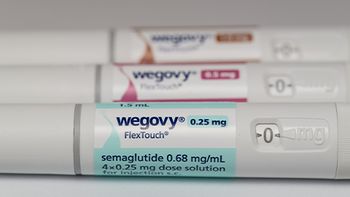
- Pharmaceutical Commerce - November/December 2009
Impax Labs Enjoys the Fruits of Its IBM Cognos Investment
With limited IT resources, the company is rolling out one business-intelligence application after another
Impax Labs (Hayward, CA) is a mid-size branded and generic manufacturer that worries about all the same business-intelligence (BI) issues as its Big Pharma competitors: sales force allocations and performance; forecasting; rebates and net sales; and overall financial performance. The need for enterprise-wide analytic tools was recognized when the company acquired a license for Cognos 8 BI in 2007 (IBM acquired Cognos in early 2008).
Now, after a couple years of application development, the company is winning accolades for its implementations. It was recognized by The Data Warehouse Institute in June as “Best Practices: BI on a Limited Budget” winner. And having developed a handful of critical corporate dashboards with only three IT professionals and some outside consulting help, it is now planning to keep building additional dashboards almost as a matter of course. The company estimates that it is currently saving 2,000 man-hours of IT effort (compared to pre-Cognos processes), while providing critical decisionmaking resources to upper management.
The essence of BI, says Paul Hake, life sciences executive at IBM, is to be able to draw fresh data rapidly from diverse sources, perform an extract, transform and load (ETL) function to make the data accessible, and then report it in dashboards or scorecards that are customizable to user needs. In Impax’s case, these needs centered initially on tracking net sales performance against plan, using accurate forecasting to measure inventory and production plans, and measuring net sales, profitability and market share.
Providing these reports used to be a manually intensive process that involves gathering data from the company’s ERP system, sales reports, third-party market data, and accounting systems. Often, the resulting reports were out of date even as they were being delivered. Now, says Jonathan Retano, associate director of BI at Impax, “Business intelligence has crossed the threshold from a novelty to an integral, critical part of our business operations.”
Retano and two other IT staff worked with ISA Consulting (Blue Bell, PA) for the initial training and setup, but now build BI applications with internal resources only. A performance goal that Retano and his team held to was “Four in four,” that is, providing four key performance indicators in less than four minutes, on demand to upper management. Moreover, he says that the reporting is rigorous enough that it is being used to qualify chargebacks and rebates with a long list of customers (something that is often performed as a follow-up step after the rebates have been issued), and to have the ability to drill down into sales reports for auditing or Sarbanes-Oxley compliance.
Having succeeded in corralling these diverse data streams, Retano is now looking over the hill at new applications. “One thing we’re thinking of is to extract financial data from our competitors’ 10Q reports, and use that to benchmark our own performance against theirs,” he says.
Blueprints for success
Although the Impax implementations did not involve their use, IBM’s Hake says that life sciences companies will probably be taking advantage of IBM Cognos Performance Blueprints, which are predesigned guidelines and reporting functionality for specific business applications. For life sciences applications, the blueprints (which are available at no charge) include:
- Clinical Modeling and Resource Tracking Performance Blueprint, to model studies in a consistent and reliable manner;
- Integrated Brand Management Performance Blueprint, for product launches and marketing productivity;
- Clinical Trial Enrollment Forecasting Performance Blueprint, to analyze enrollment trends and facilitate collaboration among stakeholders;
- Clinical Trial Forecasting Performance Blueprint, to plan trial resource allocations and expenses;
- Sales Quota Allocation Performance Blueprint, for managing quotas rapidly and centrally;
- Sample Optimization Performance Blueprint, to develop and then monitor sample allocations in line with corporate revenue objectives.
“Customers are getting comfortable not just with having current data available in a timely manner, but being able to call it up on the spot, via a mobile device,” says Hake, who adds that, in the face of the coming healthcare reform legislation, coordinating business functions with regulatory and marketing requirements will only become more complex. “There will always be more new data sources to pull into the planning process,” he says. A further enhancement of the Cognos platform in the works as IBM integrates one of its latest acquisitions, the statistics software firm SPSS, into BI implementations. PC
Articles in this issue
almost 16 years ago
J&J/McNeil widens a recall of contaminated Tylenolalmost 16 years ago
Short Takesalmost 16 years ago
Industry Tackles the New REMS Hurdlealmost 16 years ago
Pharma Gets a 'Just in Time' Speedup With the Switch to Digital Printingalmost 16 years ago
Cargo Theft Emerges as a New Biopharma Worryalmost 16 years ago
Getting Value From End-of-Life-Cycle Pharmaceuticalsalmost 16 years ago
HDMA Analyzes Evolving Specialty Distribution Businessalmost 16 years ago
AMR Research Selects 'Healthcare Top 25' for Supply Chain ExcellenceNewsletter
Stay ahead in the life sciences industry with Pharmaceutical Commerce, the latest news, trends, and strategies in drug distribution, commercialization, and market access.





